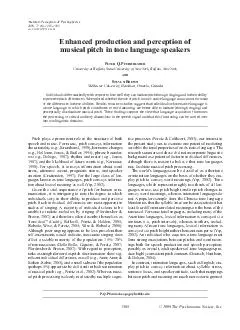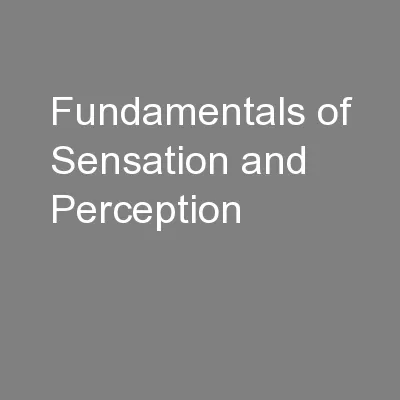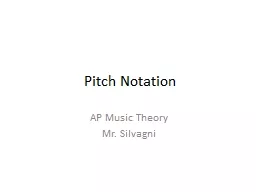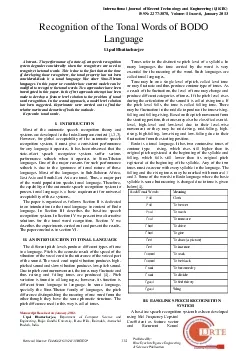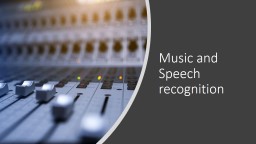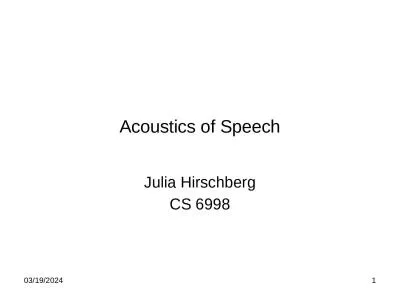PDF-Pitch plays a prominent role in the structure of both speech and music
Author : pasty-toler | Published Date : 2015-08-17
1385 Enhanced production and perception of musical pitch in tone language speakersETER Q PFORDRESHERUniversity at Buffalo State University of New York Buffalo NewYorkANDTEVENROWNMcMaster
Presentation Embed Code
Download Presentation
Download Presentation The PPT/PDF document "Pitch plays a prominent role in the stru..." is the property of its rightful owner. Permission is granted to download and print the materials on this website for personal, non-commercial use only, and to display it on your personal computer provided you do not modify the materials and that you retain all copyright notices contained in the materials. By downloading content from our website, you accept the terms of this agreement.
Pitch plays a prominent role in the structure of both speech and music: Transcript
Download Rules Of Document
"Pitch plays a prominent role in the structure of both speech and music"The content belongs to its owner. You may download and print it for personal use, without modification, and keep all copyright notices. By downloading, you agree to these terms.
Related Documents

